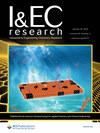CoNi Alloy Modified Separators for High-Capacity and Long Cycle Lithium–Sulfur Batteries
IF 3.8
3区 工程技术
Q2 ENGINEERING, CHEMICAL
引用次数: 0
Abstract
The main challenges faced by lithium sulfur (Li–S) batteries are severe shuttle reactions and the promotion of delayed reaction kinetics within the battery. To address these issues, this study synthesized an alloy material (CoNi). This material has excellent and abundant polysulfide adsorption active sites, thereby improving the reaction kinetics inside the battery. It is worth noting that the unique properties of metal atoms are conducive to suppressing the shuttle effect. Without adding a carbon substrate and using only the CoNi alloy as the separator coating layer, the battery can achieve excellent performance. The battery modified with a CoNi separator exhibited an initial discharge capacity of up to 935 mAh g–1 in a long 1 C cycle, with small attenuation (0.058%) single cycle after 1000 cycles. Even at a high rate of 2 C, it can remain stable for 350 cycles, with an initial discharge capacity of 821 mAh g–1 and a single cycle attenuation of 0.098%. Under a high sulfur load (3.65 mg cm–2) and a current density of 0.1 C, the initial capacity is 1064 mAh g–1, and the battery remains stable over 30 cycles. In addition, this study directly demonstrated the significant catalytic effect of CoNi material on the internal reactions of batteries through Li2S nucleation experiments, thereby improving the reaction kinetics. This study provides a new method for promoting the practical application of Li–S batteries and narrows the gap between theoretical and experimental results through long cycles and high sulfur loads.

用于高容量和长周期锂硫电池的钴镍合金改性隔膜
锂硫(Li-S)电池面临的主要挑战是电池内部严重的穿梭反应和促进延迟反应动力学。为解决这些问题,本研究合成了一种合金材料(CoNi)。这种材料具有优良而丰富的多硫化物吸附活性位点,从而改善了电池内部的反应动力学。值得注意的是,金属原子的独特性质有利于抑制穿梭效应。在不添加碳衬底的情况下,仅使用 CoNi 合金作为隔膜涂覆层,电池就能实现优异的性能。使用 CoNi 隔膜改良的电池在 1 C 长循环中的初始放电容量高达 935 mAh g-1,1000 次循环后的单次衰减很小(0.058%)。即使在 2 C 的高速率下,它也能在 350 个周期内保持稳定,初始放电容量为 821 mAh g-1,单周期衰减为 0.098%。在高硫负荷(3.65 mg cm-2)和 0.1 C 的电流密度下,初始容量为 1064 mAh g-1,电池在 30 次循环中保持稳定。此外,本研究还通过 Li2S 成核实验直接证明了 CoNi 材料对电池内部反应的显著催化作用,从而改善了反应动力学。这项研究为促进锂-S 电池的实际应用提供了一种新方法,并通过长循环和高硫负荷缩小了理论与实验结果之间的差距。
本文章由计算机程序翻译,如有差异,请以英文原文为准。
求助全文
约1分钟内获得全文
求助全文
来源期刊

Industrial & Engineering Chemistry Research
工程技术-工程:化工
CiteScore
7.40
自引率
7.10%
发文量
1467
审稿时长
2.8 months
期刊介绍:
ndustrial & Engineering Chemistry, with variations in title and format, has been published since 1909 by the American Chemical Society. Industrial & Engineering Chemistry Research is a weekly publication that reports industrial and academic research in the broad fields of applied chemistry and chemical engineering with special focus on fundamentals, processes, and products.
 求助内容:
求助内容: 应助结果提醒方式:
应助结果提醒方式:


